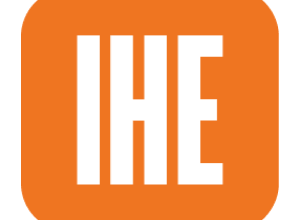Beyond SCORM: Evolving eLearning Standards Premium Scholorships Info
Rethinking Standards In A Mobile World
The eLearning company, like a well-oiled engine, depends on a complex collection of components to run properly. One critical component is the standard that defines how learning information is organized, distributed, and recorded in a Learning Management System (LMS). For many years, SCORM (Sharable Content Object Reference Model) has served as the industry’s major standard, providing a dependable bridge across various LMS platforms.
However, the digital world is ever-changing as new technologies and learner expectations emerge. SCORM, while unquestionably essential, is beginning to reveal limits in its ability to adapt to today’s eLearning environments. This begs the question: is it time to go beyond SCORM and into the wide possibilities provided by other eLearning standards?
Beyond SCORM: Why It Might Not Be Enough Anymore
SCORM has clearly served the eLearning sector well. Its standardized methodology guarantees that material is compatible across several LMS systems, allowing learning modules to be flexible and reusable. However, as technology progresses, SCORM’s shortcomings become more apparent:
- Limited mobile support
The mobile revolution has transformed how we learn. Learners nowadays demand a consistent learning experience across all platforms, including PCs, tablets, and smartphones. Unfortunately, SCORM, which was originally built for desktop settings, seemingly fails to adapt to today’s mobile-first world. - Lack of robust reporting
Although SCORM provides basic reporting capabilities like completion rates and scores, it falls short of capturing the deep data insights required for successful learning analytics. Modern learners need a more tailored learning experience, which entails gathering and evaluating precise data on learner engagement. - Limited xAPI integration
The Experience API (xAPI) has evolved as an effective mechanism for documenting learning experiences outside of traditional courses. It allows you to track informal learning activities, including simulations, social interactions, and microlearning modules. Unfortunately, SCORM interaction with xAPI is restricted, making it difficult to track a learner’s overall learning path.
Beyond SCORM: Setting A New Course With Alternative Standards
The good news is that SCORM isn’t the only eLearning standard out there. Several persuasive alternatives address the restrictions outlined above, opening up new opportunities for developing dynamic and engaging learning experiences:
cmi5
This next-generation standard expands on the basis of SCORM, providing increased mobile compatibility and reporting features. cmi5’s seamless connection with xAPI enables a more thorough and data-driven approach.
Learning Tools Interoperability
Learning Tools Interoperability (LTI) aims to integrate learning objects and tools directly into an LMS. This removes the need for separate packaging and deployment of learning information, making the learning experience more efficient for both instructors and students. Imagine easily integrating a gamified learning experience or a collaborative knowledge base straight into your LMS; LTI enables this.
Selecting The Right Standard: A Data-Driven Approach
Several important aspects influence eLearning standard selection, including:
- Learning objectives
Do you want to provide a thorough, formal course with examinations or a more casual, microlearning-based learning experience? - Target audience
Knowing your learners’ preferred devices and learning modes (mobile-first, bite-sized information vs. in-depth courses) can help you set the right benchmark. - Existing infrastructure
Does your LMS platform enable alternative standards like cmi5 or LTI? Evaluating your existing infrastructure is vital before making the switch.
Setting Sail For A Brighter eLearning Future
While SCORM has served the eLearning industry well for many years, it is time to embrace the opportunities provided by other standards. cmi5, xAPI, and LTI provide a view into the future of eLearning, indicating a more engaging, tailored, and data-driven learning experience. By accepting these new standards, we can open up a universe of learning opportunities and create really transformational educational journeys for students from all backgrounds.
Beyond A Thousand Words: A Continuous Learning Journey
The investigation of eLearning standards is an ongoing activity. As technology advances and learner expectations shift, so will our approach to eLearning standards. The goal is to remain adaptive and embrace new possibilities that allow us to develop even more effective learning experiences. Let us continue to learn and progress.
A Look At The Future Beyond SCORM: Emerging Trends And Considerations
As we move beyond SCORM, it is critical to recognize the ever-changing environment of eLearning. Here are some developing trends and factors to consider:
Emphasis On Microlearning And xAPI Integration
The rising popularity of bite-sized learning modules and microlearning methodologies needs a standard that effortlessly connects with xAPI. This enables learners to capture learning experiences outside of formal courses and measure their progress across a variety of learning activities.
The Rise Of Artificial Intelligence (AI)
AI is set to transform the eLearning business, and the selected standard must be adaptable enough to include AI-powered features such as personalized learning paths and adaptive assessments.
The Importance Of Accessibility
Learning experiences should be accessible to all students, regardless of ability. The selected standard should support features such as closed captioning.
Collaboration For A Thriving eLearning Ecosystem
The future of eLearning standards does not involve a single dominant standard replacing SCORM. Instead, it is about adopting a flexible and collaborative environment in which several standards coexist. Developers may use the capabilities of each standard to build a rich and diverse learning environment.
Consider a scenario in which a full course with assessments is provided using cmi5, and microlearning modules embedded inside the course use xAPI to measure student engagement. Furthermore, an LMS that uses LTI effortlessly combines a gamified learning experience, resulting in a highly dynamic and individualized learning trip.
By encouraging cooperation among standard developers, LMS providers, and content authors, we can realize the full potential of eLearning and create transformational learning experiences for everybody. Let us continue to learn, invent, and explore.





